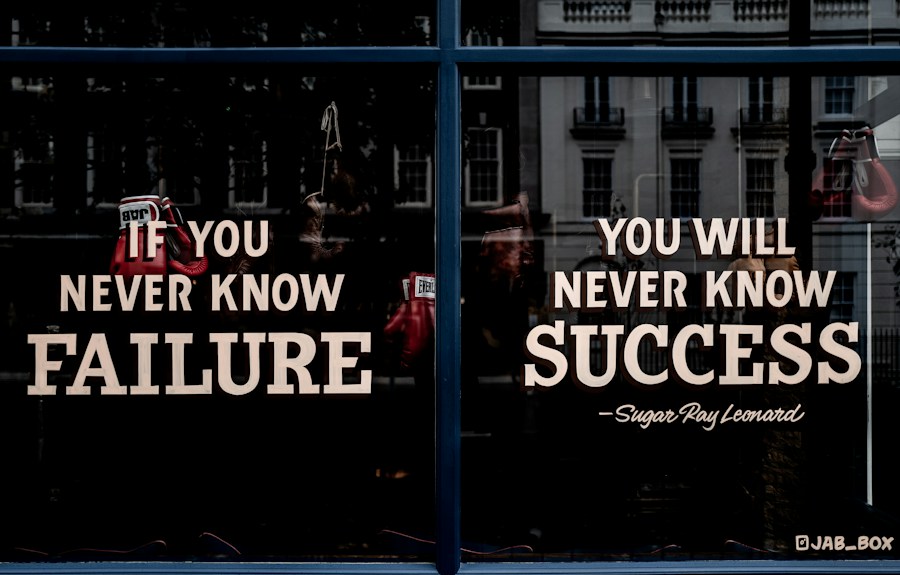Introduction
Success is something that many people strive for, but not everyone achieves it. While there are many factors that contribute to success, one of the most important is mindset. Your mindset, or the way you think and perceive the world, plays a crucial role in determining whether or not you will achieve your goals.
Having a positive and growth-oriented mindset is essential for success. It allows you to overcome obstacles, learn from failures, and stay motivated in the face of challenges. On the other hand, a negative or fixed mindset can hold you back, causing you to doubt yourself and give up easily.
In order to achieve success, it is important to shift your mindset. This means changing your beliefs, thoughts, and attitudes in a way that aligns with your goals and aspirations. By doing so, you can unlock your full potential and create the life you desire.
Understanding the Power of Mindset: How Your Beliefs Shape Your Reality
Your mindset has a profound impact on your reality. The beliefs and thoughts that you hold shape your perception of the world and influence your actions and behaviors. If you believe that you are capable of achieving great things, you are more likely to take risks, work hard, and persevere in the face of challenges.
On the other hand, if you have a negative or limiting mindset, you may doubt your abilities and be more prone to giving up when things get tough. Your beliefs become self-fulfilling prophecies; if you believe that you will fail, you are more likely to fail. Conversely, if you believe that you will succeed, you are more likely to succeed.
A positive mindset is not just about wishful thinking or blind optimism. It is about having a realistic belief in your abilities and a willingness to take action towards your goals. When you have a positive mindset, you are more likely to see opportunities where others see obstacles, and you are more likely to persevere in the face of setbacks.
You Got This!
“Your attitude, not your aptitude, determines your altitude.”
– Zig Ziglar
The Difference Between a Fixed and Growth Mindset: Which One Do You Have?
There are two main types of mindsets: fixed mindsets and growth mindsets. A fixed mindset is characterized by the belief that your abilities and intelligence are fixed traits that cannot be changed. People with a fixed mindset tend to avoid challenges, give up easily, and view failure as a reflection of their abilities.
On the other hand, a growth mindset is characterized by the belief that your abilities and intelligence can be developed through hard work, dedication, and perseverance. People with a growth mindset embrace challenges, persist in the face of setbacks, and view failure as an opportunity for growth and learning.
It is important to identify which mindset you have because it can have a significant impact on your success. If you have a fixed mindset, you may be more prone to giving up when things get tough or avoiding challenges altogether. However, if you have a growth mindset, you are more likely to embrace challenges, learn from failures, and persist in the face of setbacks.
To identify which mindset you have, pay attention to your thoughts and beliefs. Do you believe that your abilities are fixed or can they be developed? Do you view failure as a personal reflection of your abilities or as an opportunity for growth? By becoming aware of your mindset, you can begin to shift it towards a more positive and growth-oriented perspective.
Overcoming Limiting Beliefs: How to Identify and Break Through Mental Barriers
Limiting beliefs are negative thoughts or beliefs that hold you back from achieving your goals. They are often deeply ingrained and can be difficult to identify and overcome. However, overcoming limiting beliefs is essential for shifting your mindset and achieving success.
Limiting beliefs can take many forms. They may be beliefs about yourself (e.g., “I’m not smart enough” or “I’m not talented enough”), beliefs about others (e.g., “People will judge me” or “Others are more capable than me”), or beliefs about the world (e.g., “Success is only for the lucky few” or “It’s too late for me to start”).
To identify and overcome limiting beliefs, it is important to challenge them and replace them with more empowering beliefs. Start by becoming aware of your negative thoughts and beliefs. Ask yourself if these beliefs are based on facts or if they are simply assumptions or interpretations.
Once you have identified your limiting beliefs, challenge them by asking yourself if they are true. Look for evidence that contradicts these beliefs and find examples of people who have achieved success despite similar circumstances or challenges. Replace your limiting beliefs with more empowering ones that support your goals and aspirations.
The Role of Self-Talk in Shifting Your Mindset: Positive Affirmations and Visualization Techniques
Self-talk refers to the thoughts and inner dialogue that you have with yourself. It plays a crucial role in shaping your mindset and can either support or hinder your success. Positive self-talk involves using affirmations and visualization techniques to shift your mindset towards a more positive and empowering perspective.
Positive affirmations are positive statements that you repeat to yourself on a regular basis. They can help reprogram your subconscious mind and replace negative thoughts and beliefs with positive ones. For example, instead of saying “I’m not good enough,” you can say “I am capable of achieving great things.”
Visualization involves creating mental images of yourself achieving your goals and living the life you desire. By visualizing your success, you can create a clear mental picture of what you want to achieve and increase your motivation and belief in your abilities.
To use positive affirmations and visualization techniques effectively, it is important to be consistent and persistent. Repeat your affirmations daily, preferably in front of a mirror, and visualize your success as vividly as possible. Over time, these techniques can help to rewire your brain and shift your mindset towards a more positive and empowering perspective.
Embracing Failure: Why Making Mistakes Can Lead to Success
Failure is often seen as something negative, something to be avoided at all costs. However, failure is an inevitable part of the journey to success and can actually be a valuable learning opportunity. Embracing failure and reframing it as a stepping stone to success is essential for shifting your mindset and achieving your goals.
Failure provides valuable feedback and allows you to learn from your mistakes. It helps you to identify what works and what doesn’t, and it gives you the opportunity to make adjustments and improvements. Without failure, there can be no growth or progress.
To embrace failure, it is important to reframe it as a learning opportunity rather than a personal reflection of your abilities. Instead of viewing failure as a sign of incompetence or inadequacy, see it as a chance to learn, grow, and improve. Ask yourself what lessons you can take away from the experience and how you can use them to move forward.
Remember that failure is not the end of the road; it is just a temporary setback. Keep in mind that many successful people have experienced failure before achieving their goals. Use failure as motivation to keep going, learn from your mistakes, and continue to take action towards your goals.
Cultivating Resilience: How to Bounce Back from Setbacks and Challenges
Resilience is the ability to bounce back from setbacks and challenges. It is an essential trait for success because it allows you to persevere in the face of adversity and maintain a positive mindset. Cultivating resilience involves developing strategies and techniques for coping with stress, managing setbacks, and staying motivated.
One way to cultivate resilience is by developing a strong support system. Surround yourself with positive and supportive people who believe in you and your goals. Seek out mentors or role models who have overcome similar challenges and can provide guidance and support.
Another way to cultivate resilience is by practicing self-care. Take care of your physical, mental, and emotional well-being by getting enough sleep, eating a healthy diet, exercising regularly, and engaging in activities that bring you joy and relaxation. Taking care of yourself will help you stay motivated, focused, and resilient in the face of challenges.
Finally, it is important to reframe setbacks and challenges as opportunities for growth. Instead of viewing them as obstacles or failures, see them as chances to learn, improve, and become stronger. By reframing setbacks in this way, you can maintain a positive mindset and continue to take action towards your goals.
The Power of Gratitude and Mindfulness: How to Stay Positive and Focused
Gratitude and mindfulness are powerful tools for shifting your mindset and staying positive and focused. Gratitude involves acknowledging and appreciating the good things in your life, while mindfulness involves being fully present in the moment and aware of your thoughts and feelings.
Practicing gratitude involves taking time each day to reflect on the things that you are grateful for. This can be done through journaling, meditation, or simply taking a few moments to think about what you appreciate in your life. By focusing on the positive aspects of your life, you can shift your mindset towards a more positive and optimistic perspective.
Mindfulness involves paying attention to the present moment without judgment. It involves being aware of your thoughts, feelings, and sensations without getting caught up in them. By practicing mindfulness, you can become more aware of your mindset and make conscious choices about how you want to think and perceive the world.
To practice gratitude and mindfulness, set aside time each day for reflection and self-care. Start a gratitude journal where you write down three things that you are grateful for each day. Practice mindfulness meditation by focusing on your breath and bringing your attention back to the present moment whenever your mind wanders.
Setting Goals and Taking Action: How to Turn Mindset Shifts into Tangible Results
While mindset shifts are important, they are only the first step towards achieving success. In order to turn your mindset shifts into tangible results, it is important to set clear goals and take consistent action towards them.
Setting goals involves identifying what you want to achieve and creating a plan for how to get there. Your goals should be specific, measurable, achievable, relevant, and time-bound (SMART). Write down your goals and break them down into smaller, actionable steps.
Once you have set your goals, it is important to take consistent action towards them. This means taking small, manageable steps each day that move you closer to your goals. Consistency is key; even if you can only dedicate a few minutes each day to working towards your goals, it is better than doing nothing at all.
To stay motivated and focused on your goals, it can be helpful to track your progress and celebrate your achievements along the way. Keep a journal or use a goal-tracking app to record your progress and reflect on how far you have come. Celebrate your achievements, no matter how small, as they are evidence of your growth and progress.
The Importance of Consistency and Discipline: How to Stay Committed to Your Goals
Consistency and discipline are essential for achieving success. They involve staying committed to your goals and taking consistent action towards them, even when you don’t feel motivated or inspired.
Consistency involves showing up every day and doing the work, even when it’s hard or you don’t feel like it. It means making a commitment to yourself and honoring that commitment no matter what. Consistency is what separates those who achieve their goals from those who don’t.
Discipline involves setting boundaries and making choices that align with your goals. It means saying no to distractions and temptations that may hinder your progress. Discipline is about making sacrifices in the short term in order to achieve long-term success.
To stay consistent and disciplined, it can be helpful to create a routine or schedule that supports your goals. Set aside dedicated time each day or week to work towards your goals and make it a non-negotiable part of your day. Eliminate distractions and create an environment that is conducive to focus and productivity.
Remember that consistency and discipline are habits that can be developed over time. Start small and gradually increase your level of commitment and discipline. Celebrate your successes along the way, and use them as motivation to keep going.
The Journey to Success Starts with a Mindset Shift
In conclusion, achieving success starts with a mindset shift. Your mindset plays a crucial role in determining whether or not you will achieve your goals. By shifting your mindset towards a more positive, growth-oriented perspective, you can unlock your full potential and create the life you desire.
Understanding the power of mindset is essential for achieving success. Your beliefs shape your reality, and having a positive mindset can have a profound impact on your life. By cultivating a growth mindset, embracing failure, and developing resilience, you can overcome obstacles and stay motivated in the face of challenges.
Practicing gratitude, mindfulness, and positive self-talk can help shift your mindset towards a more positive and empowering perspective. Setting clear goals, taking consistent action, and staying committed to your goals are essential for turning mindset shifts into tangible results.
The journey to success is not always easy, but with the right mindset and strategies, you can achieve anything you set your mind to. Remember that success is not just about reaching a destination; it is about the continuous process of growth and mindset shifts along the way. Embrace the journey, learn from failures, and keep moving forward.







































0 Comments